
Bologna: The Culinary Heart of Italy
Discover Bologna's blend of rich history, culinary excellence, and vibrant culture in the heart of Italy's Emilia-Romagna region.
Bologna, the capital of Italy's Emilia-Romagna region, is a city that effortlessly blends rich history with vibrant modernity. Known for its medieval towers, extensive porticos, and the oldest university in the world, Bologna is a treasure trove for those who appreciate both culture and cuisine. The city's well-preserved historical center, characterized by narrow streets and ancient buildings, offers a journey back in time with each step you take. Food enthusiasts will find themselves in paradise here. Bologna is famous for its gastronomic delights, including the iconic Bolognese sauce, which is locally called 'ragù'. The city is also home to numerous trattorias and osterias where you can savor traditional dishes like tortellini, tagliatelle, and mortadella. The bustling food markets, such as Mercato di Mezzo, offer a feast for the senses and a chance to sample local produce. Beyond its culinary appeal, Bologna is a city of learning and innovation. The University of Bologna, founded in 1088, draws students from around the globe, adding a youthful and dynamic vibe to the city. Art and culture thrive here, with numerous museums, galleries, and theaters hosting a variety of events year-round. Whether you're wandering through the historic Quadrilatero district or exploring the lush green spaces like the Montagnola Park, Bologna promises an enriching and unforgettable experience.
Local tips in Bologna
- Visit the Two Towers, Asinelli and Garisenda, for a panoramic view of the city.
- Explore the Quadrilatero market area for authentic local food and produce.
- Take a guided tour of the University of Bologna to learn about its historical significance.
- Try the traditional Bolognese ragù at a local trattoria.
- Utilize the city’s extensive porticos for a unique walking experience, especially in rainy weather.
- Visit the Basilica of San Petronio, one of the largest churches in the world.
- Check out the local events calendar for various festivals, art shows, and cultural events.
Bologna: The Culinary Heart of Italy
Bologna, the capital of Italy's Emilia-Romagna region, is a city that effortlessly blends rich history with vibrant modernity. Known for its medieval towers, extensive porticos, and the oldest university in the world, Bologna is a treasure trove for those who appreciate both culture and cuisine. The city's well-preserved historical center, characterized by narrow streets and ancient buildings, offers a journey back in time with each step you take. Food enthusiasts will find themselves in paradise here. Bologna is famous for its gastronomic delights, including the iconic Bolognese sauce, which is locally called 'ragù'. The city is also home to numerous trattorias and osterias where you can savor traditional dishes like tortellini, tagliatelle, and mortadella. The bustling food markets, such as Mercato di Mezzo, offer a feast for the senses and a chance to sample local produce. Beyond its culinary appeal, Bologna is a city of learning and innovation. The University of Bologna, founded in 1088, draws students from around the globe, adding a youthful and dynamic vibe to the city. Art and culture thrive here, with numerous museums, galleries, and theaters hosting a variety of events year-round. Whether you're wandering through the historic Quadrilatero district or exploring the lush green spaces like the Montagnola Park, Bologna promises an enriching and unforgettable experience.
When is the best time to go to Bologna?
Iconic landmarks you can’t miss
Piazza Maggiore
Experience the vibrant heart of Bologna at Piazza Maggiore, surrounded by stunning architecture and rich cultural heritage.

Two Towers
Discover the iconic Two Towers of Bologna, a historic symbol offering breathtaking views and a glimpse into the city's rich medieval past.

Giardini Margherita
Experience the lush tranquility and vibrant culture of Giardini Margherita, Bologna's beloved city park, perfect for relaxation and recreation.

Piazza Santo Stefano
Explore the historical charm of Piazza Santo Stefano, a stunning square in Bologna surrounded by beautiful churches and rich local culture.

Santuario Madonna di San Luca
Discover the spiritual heart of Bologna at the breathtaking Santuario Madonna di San Luca, a serene shrine rich in history and stunning views.

Fontana del Nettuno
Discover the stunning Fontana del Nettuno, a historical landmark in Bologna, showcasing exquisite artistry and vibrant local culture.

Arco Del Meloncello
Discover the Arco Del Meloncello, an iconic arch in Bologna that blends stunning architecture with rich history, inviting you to explore its enchanting surroundings.
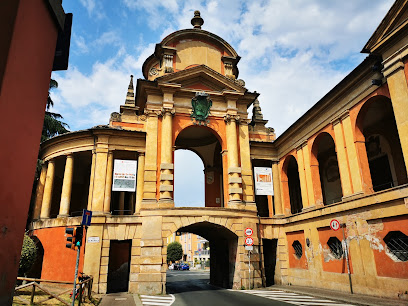
Cattedrale Metropolitana di San Pietro
Discover the rich history and breathtaking beauty of the Cattedrale Metropolitana di San Pietro in Bologna, a must-visit landmark for every traveler.
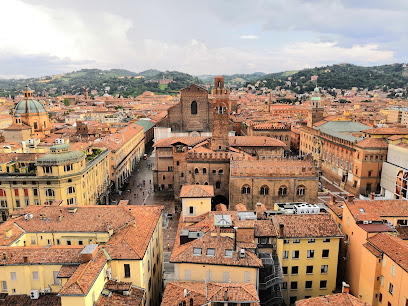
Basilica di San Petronio
Explore the majestic Basilica di San Petronio in Bologna, a Gothic masterpiece filled with art and history at the heart of the city.

Basilica of San Domenico
Discover the architectural beauty and rich history of Bologna at the Basilica of San Domenico, a must-visit Catholic church brimming with art.

Porta Saragozza
Explore Porta Saragozza, Bologna's iconic historical landmark, where stunning architecture meets rich cultural heritage.

Pinacoteca Nazionale
Immerse yourself in the artistic wonders of Bologna at the Pinacoteca Nazionale, home to masterpieces from the Renaissance to the modern era.

Porta San Felice, Bologna
Discover Porta San Felice, Bologna's iconic historical landmark showcasing splendid architecture and rich cultural heritage.
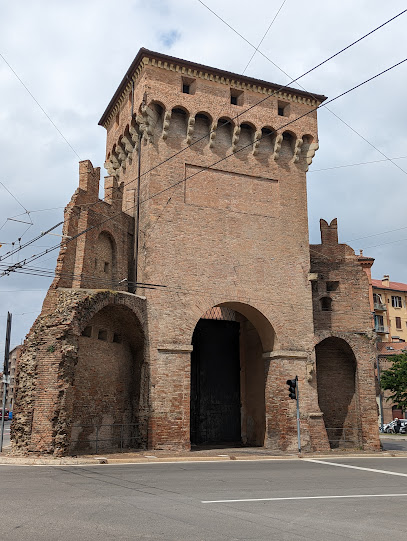
Palazzo Re Enzo
Discover the historical majesty of Palazzo Re Enzo in Bologna, a captivating landmark steeped in rich heritage and architectural beauty.
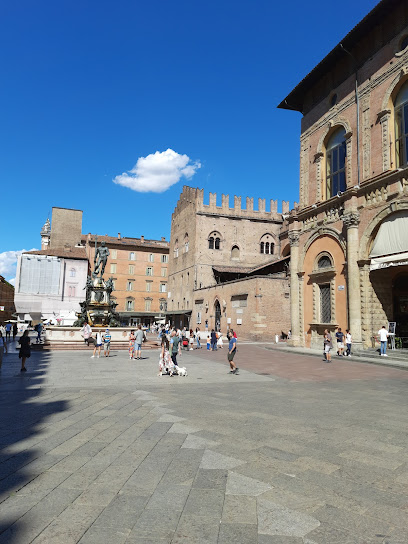
Parco di Villa Angeletti
Discover the tranquil beauty of Parco di Villa Angeletti, a serene park in Bologna perfect for relaxation and enjoying nature's splendor.

Unmissable attractions to see
Piazza Maggiore
Explore Bologna's iconic Piazza Maggiore, a vibrant square rich in history and culture, surrounded by stunning architecture and local delights.

FICO World Eataly
Discover FICO World Eataly: Immerse yourself in Italy's culinary heritage at the largest agri-food park in the world, situated in Bologna.

Museum Ferrari Maranello
Explore the legacy of Ferrari at the iconic Ferrari Museum in Maranello, where automotive history and modern engineering come to life.

Two Towers
Explore the stunning Two Towers in Bologna, a symbol of the city's rich history and breathtaking views, perfect for any traveler seeking adventure.

Estense Castle
Discover the enchanting Estense Castle in Ferrara, a historical monument rich in art, culture, and breathtaking architecture.

Enzo Ferrari Museum
Discover the legacy of Enzo Ferrari at the iconic Enzo Ferrari Museum in Modena, an automotive paradise celebrating speed, innovation, and Italian craftsmanship.

Giardini Margherita
Discover the beauty and tranquility of Giardini Margherita, Bologna's stunning city park, perfect for relaxation and outdoor activities.

Mercato delle Erbe
Discover the flavors of Bologna at Mercato delle Erbe, a vibrant market showcasing fresh produce and local delicacies in the heart of Italy.

Modena Cathedral
Explore the stunning Modena Cathedral, a UNESCO World Heritage Site, and immerse yourself in Modena's rich cultural and architectural heritage.

Piazza Santo Stefano
Discover the enchanting Piazza Santo Stefano in Bologna: a historic square filled with stunning architecture, rich culture, and vibrant local life.

Lamborghini Automobile Museum
Immerse yourself in the world of luxury and speed at the Lamborghini Automobile Museum in Sant'Agata Bolognese, Italy.

Santuario Madonna di San Luca
Explore the breathtaking Santuario Madonna di San Luca, a serene shrine with stunning views, rich history, and beautiful Baroque architecture in Bologna.

Palazzo dei Diamanti
Explore the artistic treasures and stunning architecture of Palazzo dei Diamanti, a cultural gem in the heart of Ferrara, Italy.

Parco della Montagnola
Explore the lush landscapes and cultural charm of Parco della Montagnola, a must-visit green oasis in Bologna's vibrant heart.
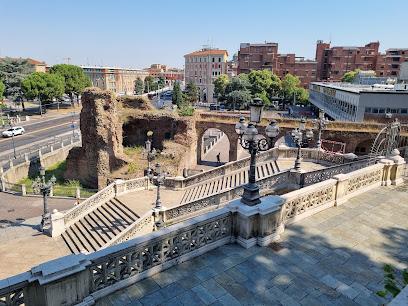
Cathedral of Ferrara
Discover the Cathedral of Ferrara, a stunning Romanesque masterpiece, rich in history and artistry at the heart of Ferrara, Italy.

Essential places to dine
Osteria dell'Orsa
Discover authentic Bolognese flavors at Osteria dell'Orsa, where tradition meets taste in a charming Italian restaurant.

Sfoglia Rina
Experience authentic Italian cuisine at Sfoglia Rina – Bologna's premier destination for fresh pasta and delightful breakfasts.

La Prosciutteria Bologna
Discover authentic Italian flavors at La Prosciutteria Bologna with delicious cold cuts, fine wines, and delightful small plates in a charming atmosphere.
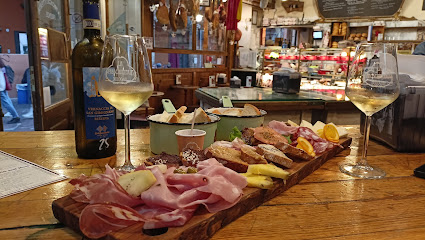
Bottega Portici - 2 Torri
Experience authentic Italian cuisine at Bottega Portici - where tradition meets flavor in Bologna's historic center.

Trattoria da Me
Discover authentic Italian flavors at Trattoria da Me in Bologna – where every dish tells a story of tradition and passion.

Va Mo Là lunch
Discover authentic Italian flavors at Va Mo Là in Bologna—where traditional cuisine meets vibrant bar culture.

Trattoria del Tempo Buono
Discover authentic Italian cuisine in Bologna at Trattoria del Tempo Buono - where every meal is a celebration of tradition and flavor.

Donatello
Experience authentic Northern Italian cuisine at Donatello in Bologna - where tradition meets flavor in every dish.

Ca' Pelletti - Altabella
Discover authentic Italian flavors at Ca' Pelletti in Bologna – where tradition meets taste in every dish.

Ristorante da Nello al Montegrappa
Experience authentic Italian cuisine at Ristorante da Nello al Montegrappa in Bologna - where tradition meets taste.

Ca' Pelletti
Experience authentic Bolognese cuisine at Ca' Pelletti - home to handmade pasta and local delicacies in the heart of Italy.

Trattoria Osteria Buca Manzoni
Discover authentic Bolognese flavors at Trattoria Osteria Buca Manzoni - where tradition meets taste in the heart of Bologna.

Zerocinquantino
Experience authentic Italian flavors at Zerocinquantino, Bologna's premier destination for small plates and local delicacies.

051 Osteria
Experience authentic Bolognese flavors at 051 Osteria, where every dish tells a story in this cozy bistro dedicated to small plates.

Eataly Bologna Ambasciatori
Discover authentic Italian flavors at Eataly Bologna Ambasciatori - your gateway to Italy's rich culinary traditions.

Markets, malls and hidden boutiques
Galleria Cavour
Discover luxury shopping at Galleria Cavour in Bologna, featuring designer boutiques, fine dining, and an elegant atmosphere for a memorable experience.

Louis Vuitton Bologna
Experience unparalleled luxury shopping at Louis Vuitton Bologna, where elegance meets craftsmanship in the heart of Italy's fashion scene.

Back Door
Explore Back Door in Bologna for a unique selection of stylish clothing and shoes that blend local flair with contemporary fashion.

Humana Vintage Bologna
Uncover unique fashion treasures at Humana Vintage Bologna, where every piece tells a story and style meets nostalgia.
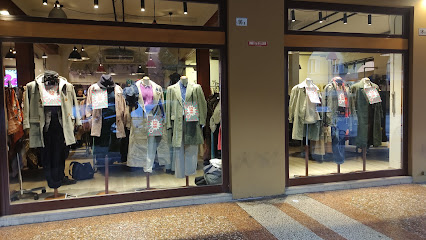
Pylones Bologna
Discover unique gifts and whimsical treasures at Pylones Bologna, the perfect stop for souvenirs that capture the spirit of Italy.
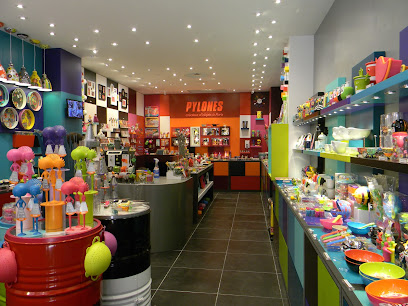
Gucci - Bologna Galleria
Explore the luxurious world of Gucci in Bologna's Galleria Cavour, where elegance and style come together in a premier shopping destination.

Cervellati
Discover unique gifts and local crafts at Cervellati, Bologna's charming gift shop offering a delightful shopping experience.

La Leonarda
Discover vintage treasures at La Leonarda, Bologna's premier vintage clothing store offering unique fashion pieces steeped in history and charm.

La Coroncina Di Coralba Sancini E C. Sas
Explore Bologna's charm at La Coroncina, a quaint gift shop filled with unique souvenirs and local treasures, perfect for every visitor.

HERMÈS Bologna
Discover HERMÈS Bologna, where luxury leather goods meet timeless craftsmanship in the heart of Italy's historic city.

EMPORIO ARMANI Bologna Store
Experience the elegance of Italian fashion at Emporio Armani Bologna, where style meets sophistication in a stunning boutique setting.

Fabrica Features Fab Feat Store
Explore Fab Feat Store in Bologna: Your destination for unique gifts and books that capture the essence of Italy's rich culture.

Pinko Boutique Bologna
Discover exquisite women's fashion and stylish accessories at Pinko Boutique Bologna, a must-visit for fashion enthusiasts in the heart of the city.

C'è un mondo - Il Tuo negozio EQUO e BIO a Bologna
Discover unique fair trade and organic products at C'è un Mondo, a charming store in Bologna offering clothing, cosmetics, and health foods.
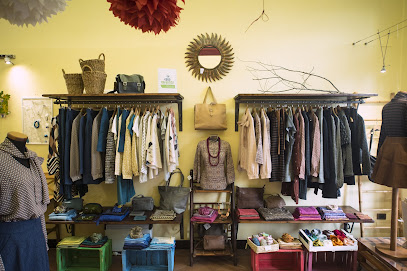
AB Gift Gadgets
Discover unique gifts and souvenirs at AB Gift Gadgets, the perfect spot for tourists in Bologna to find memorable keepsakes.

Essential bars & hidden hideouts
Cluricaune Irish Pub
Discover the vibrant atmosphere of Cluricaune Irish Pub in Bologna, where Irish culture meets Italian flair through hearty dishes and lively entertainment.

Bar Senza Nome
Discover Bar Senza Nome, Bologna’s charming bar offering an extensive wine selection and a cozy ambiance perfect for relaxation.

BrewDog Bologna
Explore the vibrant atmosphere of BrewDog Bologna, where craft beer meets delicious food in a lively pub setting.
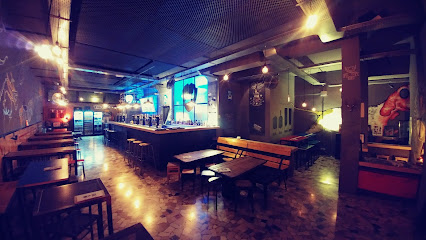
Ruggine
Discover Bologna's vibrant culinary scene at Ruggine, a unique cocktail bar and bistro blending local flavors with innovative drinks.

Roxy Bar
Experience the vibrant atmosphere of Roxy Bar in the heart of Bologna, where great drinks and local culture come together.

Il Punto
Experience the best of Bologna's culinary scene at Il Punto, a lively beer hall known for delicious burgers and a vibrant atmosphere.

Macondo - Cocktail Bar
Discover Bologna's vibrant nightlife at Macondo Cocktail Bar, where expertly crafted cocktails and a lively atmosphere await every visitor.

NU Lounge Bar
Experience the vibrant atmosphere and tropical cocktails at NU Lounge Bar, Bologna's premier Tiki and cocktail destination.

Fun Cool Oh!
Discover Bologna's vibrant nightlife at Fun Cool Oh!, a lively bar offering an extensive drink menu in a cozy and inviting atmosphere.

Black Cat Live Music Pub
Discover the heart of Bologna's nightlife at Black Cat Live Music Pub, where vibrant performances and a welcoming ambiance await you.

Caffè Ristretto
Discover the vibrant cocktail culture of Bologna at Caffè Ristretto, where innovative drinks meet a lively atmosphere.
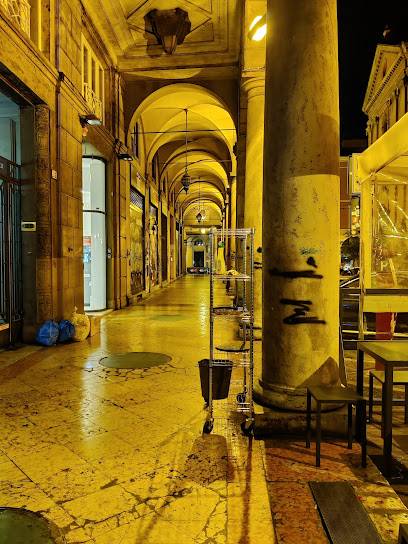
Il Mistico, Cocktail & Wine
Discover the charm of Bologna at Il Mistico, a cocktail and wine bar offering an exquisite selection and inviting atmosphere for an unforgettable experience.

Black & white Bologna Vintage American bar
Discover Black & White Bologna, a vintage American bar that combines nostalgic decor with an extensive cocktail menu, perfect for a memorable night out in Bologna.

Donkey
Discover Donkey, Bologna's premier cocktail bar and night club, where creative drinks and vibrant nightlife create unforgettable experiences.

Bebi Bar
Experience the heart of Bologna at Bebi Bar, where cozy ambiance meets delightful drinks in a perfect blend of local charm.

Local Phrases
-
- HelloCiao
[chow] - GoodbyeArrivederci
[ah-ree-veh-dehr-chee] - YesSì
[see] - NoNo
[noh] - Please/You're welcomePer favore/Prego
[pehr fah-vo-reh/preh-goh] - Thank youGrazie
[grah-tsyeh] - Excuse me/SorryScusa/Mi dispiace
[skoo-sah/mee dee-spyah-cheh] - How are you?Come stai?
[koh-meh stai] - Fine. And you?Bene. E tu?
[beh-neh. eh too] - Do you speak English?Parli inglese?
[pahr-lee een-gleh-zeh] - I don't understandNon capisco
[non kah-pee-skoh]
- HelloCiao
-
- I'd like to see the menu, pleaseVorrei vedere il menù, per favore
[vohr-ray veh-deh-reh eel meh-noo, pehr fah-vo-reh] - I don't eat meatNon mangio carne
[non mahn-joh kahr-neh] - Cheers!Salute!
[sah-loo-teh] - I would like to pay, pleaseVorrei pagare, per favore
[vohr-ray pah-gah-reh, pehr fah-vo-reh]
- I'd like to see the menu, pleaseVorrei vedere il menù, per favore
-
- Help!Aiuto!
[ah-yoo-toh] - Go away!Vai via!
[vah-ee vee-ah] - Call the Police!Chiama la polizia!
[kee-ah-mah lah poh-lee-tsya] - Call a doctor!Chiama un dottore!
[kee-ah-mah oon doht-toh-reh] - I'm lostMi sono perso
[mee soh-no pehr-soh] - I'm illSto male
[stoh mah-leh]
- Help!Aiuto!
-
- I'd like to buy...Vorrei comprare...
[vohr-ray kohm-prah-reh] - I'm just lookingSto solo guardando
[stoh soh-loh gwahr-dahn-doh] - How much is it?Quanto costa?
[kwahn-toh koh-stah] - That's too expensiveÈ troppo caro
[eh trohp-poh kah-roh] - Can you lower the price?Puoi abbassare il prezzo?
[pwah-ee ahb-bahs-sah-reh eel preh-tsoh]
- I'd like to buy...Vorrei comprare...
-
- What time is it?Che ora è?
[keh oh-rah eh] - It's one o'clockÈ l'una
[eh loo-nah] - Half past (10)Le dieci e mezza
[leh dee-eh-chee eh meh-tsa] - MorningMattina
[maht-tee-nah] - AfternoonPomeriggio
[poh-meh-ree-joh] - EveningSera
[seh-rah] - YesterdayIeri
[yeh-ree] - TodayOggi
[oh-jee] - TomorrowDomani
[doh-mah-nee] - 1Uno
[oo-no] - 2Due
[doo-eh] - 3Tre
[treh] - 4Quattro
[kwah-troh] - 5Cinque
[cheen-kweh] - 6Sei
[seh-ee] - 7Sette
[seht-teh] - 8Otto
[oh-ttoh] - 9Nove
[noh-veh] - 10Dieci
[dee-eh-chee]
- What time is it?Che ora è?
-
- Where's a/the...?Dov'è...?
[doh-veh] - What's the address?Qual è l'indirizzo?
[kwahl eh leen-dee-reet-soh] - Can you show me (on the map)?Puoi mostrarmi (sulla mappa)?
[pwah-ee mohs-trahr-mee soo-lah mahp-pah] - When's the next (bus)?Quando passa il prossimo (autobus)?
[kwahn-doh pahs-sah eel prohs-see-moh ow-toh-boo-s] - A ticket (to ....)Un biglietto (per ....)
[oon bee-lyet-toh pehr]
- Where's a/the...?Dov'è...?
History of Bologna
-
Bologna's history dates back to the 6th century BCE when it was known as Felsina, an Etruscan settlement. In the 4th century BCE, the city was conquered by the Gauls and later by the Romans in 189 BCE, who renamed it Bononia. The Roman era saw the establishment of a grid layout, the construction of roads, and significant urban development.
-
During the Middle Ages, Bologna became an important urban center. In 1088, the University of Bologna was founded, becoming the oldest university in continuous operation in the world. The university attracted scholars from all over Europe and became renowned for its studies in law, medicine, and the arts.
-
From the 12th to the 14th century, Bologna was a prosperous and influential commune. This period saw the construction of numerous defensive towers, with estimates suggesting there were once as many as 180 towers in the city. The iconic Asinelli and Garisenda towers are remnants of this era, symbolizing the power and wealth of the city's leading families.
-
In 1506, Bologna came under the control of the Papal States. Despite the political shift, the city flourished during the Renaissance, with significant contributions to art, science, and architecture. Renowned artists such as the Carracci brothers and Guido Reni left their mark with works that can still be admired in the city's churches and galleries.
-
The late 18th and early 19th centuries saw Bologna's occupation by Napoleonic forces. The city was incorporated into the Cisalpine Republic and later the Kingdom of Italy under Napoleon. After the fall of Napoleon, Bologna returned to Papal control until the unification of Italy in 1861, when it became part of the newly established Kingdom of Italy. The 19th and 20th centuries brought industrialization, modernization, and significant urban growth.
-
Bologna experienced significant damage during World War II due to its strategic importance as a transportation hub. The city was heavily bombed, resulting in extensive destruction. After the war, Bologna underwent a period of rapid reconstruction and modernization, rebuilding its infrastructure and preserving its historical heritage.
-
In recent decades, Bologna has experienced a cultural renaissance, becoming a vibrant center for the arts, education, and gastronomy. The city is known for its rich culinary traditions, including its famous Bolognese sauce and fresh pasta. Bologna remains a dynamic and thriving city, blending its historical legacy with contemporary innovation.
Bologna Essentials
-
Bologna is well-connected by air, rail, and road. The main airport serving Bologna is Guglielmo Marconi Airport (BLQ), located about 6 kilometers from the city center. It offers flights to and from numerous European and international destinations. The airport is connected to the city center by the Aerobus, which operates frequently. Bologna Centrale is the main train station and is a major railway hub in Italy, offering high-speed train connections to cities like Milan, Florence, and Rome. If you prefer driving, Bologna is accessible via the A1 and A14 motorways.
-
Bologna has an efficient public transportation system that includes buses and trains. The TPER (Trasporto Passeggeri Emilia-Romagna) operates the city’s bus services. Tickets can be bought at newsstands, tobacco shops, or via the TPER app. For short distances, biking is a popular option, and the city offers bike-sharing services. Taxis are readily available, and ride-sharing apps like Uber are operational in the city. Renting a car is also an option, especially if you plan to explore the surrounding Emilia-Romagna region.
-
The official currency in Bologna is the Euro (€). Credit and debit cards are widely accepted in hotels, restaurants, and shops. ATMs are plentiful throughout the city for cash withdrawals. It is advisable to carry some cash, particularly for small purchases or in smaller establishments. Contactless payment systems are also becoming increasingly common.
-
Bologna is generally a safe city for tourists. However, like any urban area, it is important to stay vigilant. Be cautious in crowded areas such as train stations and tourist spots to avoid pickpocketing. The area around the train station and the university district can be more prone to petty crime, especially at night. Stick to well-lit and populated areas after dark.
-
In case of emergency, dial 112 for immediate assistance, which is the European emergency number. For medical emergencies, Bologna has several hospitals, including the Policlinico Sant'Orsola-Malpighi. Pharmacies are widely available and usually have an on-call service during nights and holidays. It’s advisable to carry travel insurance that covers medical emergencies.
-
Fashion: Do dress stylishly, as Italians take pride in their appearance. Avoid overly casual clothing like flip-flops or beachwear when in the city. Religion: Do respect religious sites by dressing modestly. Cover your shoulders and knees when entering churches. Public Transport: Do validate your bus ticket upon boarding. Don’t forget to offer your seat to elderly passengers. Greetings: Do greet with a firm handshake and maintain eye contact. A kiss on both cheeks is common among acquaintances. Eating & Drinking: Do try local dishes like tagliatelle al ragù and tortellini. Avoid asking for modifications to your dish as it’s considered disrespectful to the chef.
-
To experience Bologna like a local, spend time exploring the narrow streets and hidden alleys of the Quadrilatero district, known for its vibrant markets and food stalls. Visit the Mercato di Mezzo for a taste of local cuisine. Take a stroll under the city's iconic porticoes, which provide shelter from both sun and rain. Don’t miss a visit to the historic University of Bologna, the oldest university in continuous operation. For a panoramic view of the city, climb the Asinelli Tower.
Trending Landmark in Bologna
-
Piazza Maggiore
-
Two Towers
-
Giardini Margherita
-
Piazza Santo Stefano
-
Santuario Madonna di San Luca
-
Fontana del Nettuno
-
Arco Del Meloncello
-
Cattedrale Metropolitana di San Pietro
-
Basilica di San Petronio
-
Basilica of San Domenico
-
Porta Saragozza
-
Pinacoteca Nazionale
-
Porta San Felice, Bologna
-
Palazzo Re Enzo
-
Parco di Villa Angeletti
Nearby Cities to Bologna
-
Things To Do in Modena
-
Things To Do in Ravenna
-
Things To Do in Florence
-
Things To Do in Parma
-
Things To Do in Lucca
-
Things To Do in Acquaviva
-
Things To Do in Borgo Maggiore
-
Things To Do in Chiesanuova
-
Things To Do in Serravalle
-
Things To Do in San Marino
-
Things To Do in Domagnano
-
Things To Do in Verona
-
Things To Do in Rimini
-
Things To Do in Fiorentino
-
Things To Do in Faetano













